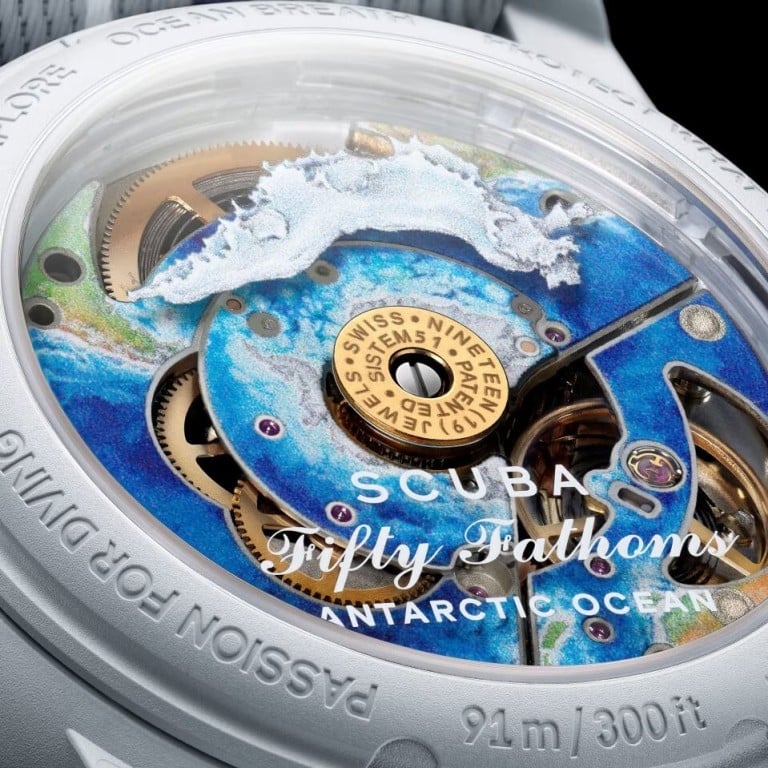What is bioceramic, the material in Blancpain x Swatch’s new timepiece? The Bioceramic Scuba Fifty Fathoms watch is set to rake in billions – and it’s not plain old plastic, emphasises the group’s CEO

- Nick Hayek, CEO of Swatch Group AG, opened the company’s Swiss factory to show how its new US$400 Blancpain isn’t made of just plastic, but a patented compound of ceramic and plant-based material
- Bioceramic also features in the highly successful Omega MoonSwatch and carmakers have inquired after it too – but will the collab spark even more luxury and entry-level watch tie-ups?
Bright spaghetti-like strands jiggle across a conveyor belt at a manufacturing plant in Grenchen, Switzerland, before arching into a cutting machine that spits a shower of yellow pellets into an industrial-sized sack.
Nick Hayek, the 68-year-old chief executive officer of Swatch Group AG, reaches in and pulls out a handful. “Look, they’re still warm,” he says.

The launch of the US$400 automatic timepiece, a collaboration between the entry-level Swatch brand and the ultra-luxury marque Blancpain, prompted long lines and sold-out stock at Swatch stores when it debuted on September 9.
Hayek, whose late father Nicolas Hayek Sr. is often credited with saving the Swiss watch industry from the quartz crisis of the 1980s with the introduction of accessible Swatch watches, wants to make clear that the new timepiece isn’t made of plain old plastic.

The CEO went so far as to produce a patent application filed with the World Intellectual Property Organization titled “Article Made From a Heavy Plastic Material” that details the compound.
“Without the patent and this innovation of bioceramic we would not have done these collaborations,” Hayek says, referring to the MoonSwatch and the joint effort with Blancpain, which have helped revive the fortunes of the Swatch brand. Swatch Group owns both Omega and Blancpain.
The patent application reveals that bioceramic does, in fact, contain polymer material – technically plastic. However, it accounts for less than half of the compound and is made from castor oil derived from plants rather than petroleum. Ceramic powder, similar to what’s used in dental work, accounts for at least half of the compound, the patent filing shows.